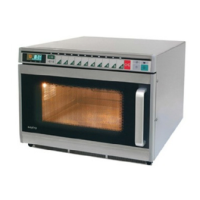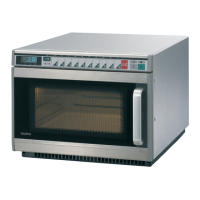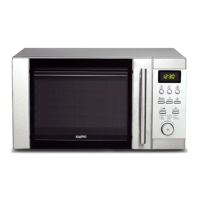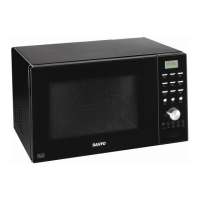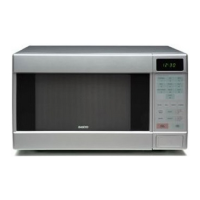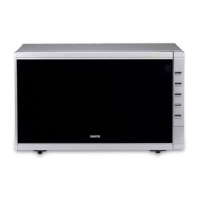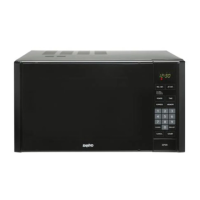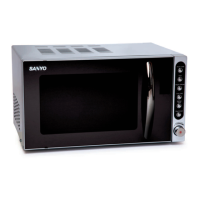PRECAUTIONS
PRECAUTIONS TO BE OBSERVED BEFORE AND DURING SERVICING TO AVOID POSSIBLE EXPOSURE TO
EXCESSIVE MICROWAVE ENERGY
(a) Do not operate or allow the oven to be operated with the door open.
(b) Make the following safety checks on all ovens to be serviced before activating the magnetron or other
microwave source, and make repairs as necessary:
(1)Interlock operation, (2) proper door closing, (3) seal and sealing surfaces (arcing, wear, and other
damage), (4) damage to or loosening of hinges and latches, (5) evidence of dropping or abuse.
(c) Before turning on microwave power for any service test or inspection within the microwave generating
compartments, check the magnetron, wave guide or transmission line, and cavity for proper alignment,
integrity, and connections.
(d) Any defective or misadjusted components in the interlock, monitor, door seal, and microwave generation
and transmission systems shall be repaired replaced, or adjusted by procedures described in this manual
before the oven is released to the owner.
REFERENCE NO.
SM-6410009-00
Foreword
FILE NO.
SERVICE MANUAL Microwave oven EM-C1100UK
EM-C1100SD
Model No Pro.code No
EM-C1100SD 437 524 00
EM-C1100UK 437 524 01
Read this manual carefully, especally precaution on microwave enery, an follow the procedure strictly,
careless servicing and testing may expose yourself to the microwave energy leakage.


